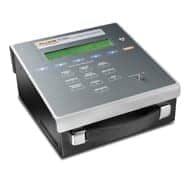Choosing a PDA is like choosing a car: What do you need it to do? It can keep track of your schedule and your to-do list. It’s a handy reference tool for work, and it’s an entertainment center in the palm of your hand. Some can connect to the Internet; others offer phone service. Just as you would distinguish between sports car, minivan, sedan and sport utility vehicle, you can narrow down choices among hand-held devices.

Choosing a PDA is like choosing a car: What do you need it to do for you? You wouldn’t choose a Miata to ferry the kids to soccer games, and you probably don’t want a Hummer for your long, daily, solo commute. Just as you would distinguish between sports car, minivan, sedan and sport utility vehicle, you can narrow down choices among hand-held devices.
What’s in it for me?
A PDA can handle basic Personal Information Manager (PIM) tasks – schedule, contacts, task list, notes – and synchronize the information with your desktop or laptop software via a serial or USB interface, “beaming” via an infrared port or through a wireless connection. But it doesn’t stop there.
A PDA can be a reference tool: Use it to read e-books or access data relevant to your work, including inventory and work orders. Edit information by typing on a portable keyboard or keypad; use a stylus to tap an onscreen keyboard; or write directly on the screen. Record digital voice memos, play games, listen to music or add a digital camera, scanner, printer and other accessories.
To purchase the full text of this article, click here…



